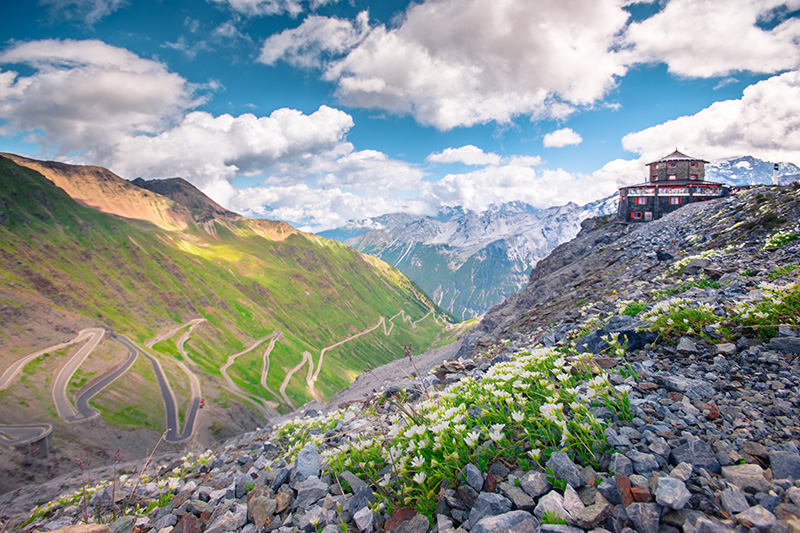Italy is among the countries with the most biodiversity and the highest number of protected areas in the world. It’s a small treasure chest to be protected and appreciated. There are 23 officially recognized national parks in Italy, flanked by 29 protected areas. Almost all regions of Italy have at least one national park within their borders.
Among the most important parks we remember the Gran Paradiso National Park, which is the oldest park in Italy, established in 1922 and covers an area of over 270 square miles between the Aosta Valley and Piedmont. Inside we find the only mountain over 12,000 feet high entirely in Italian territory and five valleys in which there are typical alpine environments with glaciers, rocks and wooded areas. The animal symbol of the park is the Alpine ibex, a type of wild goat species at risk of extinction before the establishment of the protected area, but which today thrives in it’s environment.
The Stelvio National Park, with its 502 square miles, also extends over a territory divided into two regions: Lombardy and Trentino Alto Adige. The fauna (animals and creatures of a specific region) is made up of numerous specimens and counts, among vertebrates alone account for over 260 species. These include the presence of large birds of prey, the rich populations of ungulates (especially deer and ibex) and the presence of many species typical of mountain habitats (marmot, white hare, ermine, etc.). The park also has historical value, as the western fighting front ran though here during the World War I.
The Cinque Terre National Park, on the other hand, is among the smallest ones in Italy and at the same time the most densely populated. Here the hand of man has made itself felt for millennia, shaping the landscape in a unique way. Its terraces, dry stone walls and the five little towns that make it up are very famous all over the world: Riomaggiore, Manarola, Corniglia, Vernazza and Monterosso al Mare. The entire territory is now a World Heritage Site.
One of the main reasons for the birth of the Belluno Dolomites National Park is the great wealth and rarity of its flora. Geology is also important, thanks to the presence of numerous karst formations and the longest and deepest cave in the whole of Veneto: it is over 21 miles long and 3,000+ feet deep.
Between Marche and Umbria is the Monti Sibillini National Park which well represents the landscape of the Italian Apennines. Here rivers and streams have drawn the territory into narrow and deep gorges. Also within the park is the Piani di Castelluccio, a plateau famous for its colors. During the summer it’s covered with a multitude of colored flowers due to the cultivation of lentils that made the village of Castelluccio famous all over the world for it’s beautiful floral landscapes.
The Gran Sasso and Monti della Laga National Park, among Abruzzo, Lazio and Marche, is one of the largest parks in Italy with some of the richest biodiversity in Europe. Inside stands the Gran Sasso mountain, at 9,400 feet is the highest mountain in Apennines. The park is famous for having numerous wolf packs and herds of horses and cows in the wild. The Marsican bear has recently returned to stay in these woods.
Known more as a tourist destination, Puglia is also one of the richest regions of different habitats and biodiversity. It is a very diverse and sustainable habitat. The Gargano National Park protects this natural wealth through their maintenance efforts. Extending over an area of over 460 square miles, the park extends between ancient forests and archipelagos bathed in crystal clear water. There are several protected areas including the Marine Reserve of the Tremiti Islands, unique in its kind for the extraordinary beauty of the seabed and for the natural caves.
Last but not least, we also remember the Sila National Park, one of the Italian parks with the greatest plurality of landscapes. The Sila plateau that extends into Calabria among the provinces of Cosenza, Crotone and Catanzaro. At Sila National Park there is a natural heritage where the diversity of landscapes, the variety of animal and plant species and the beauty of the places are protected as treasures. We move from the Mediterranean area to the Mountain Beech Forests, which are home to more than 175 species of vertebrates, including the wolf and the many birds of prey that populate the area. An area that, while retaining its fascinating aspects of being a wild and uncontaminated area, also provides additional scenic benefits thanks to the many characteristic towns it hosts, the welcoming people, and the opportunity to practice numerous outdoor sports.

